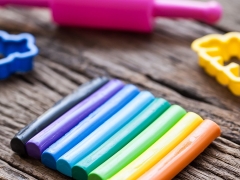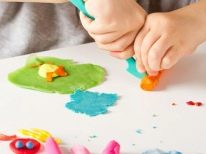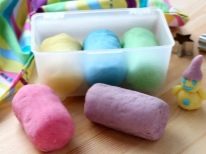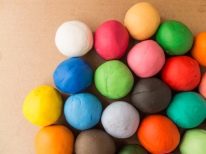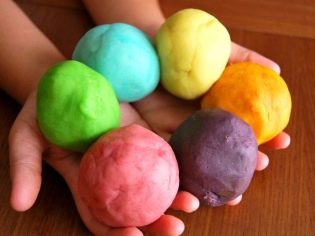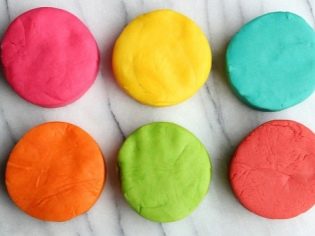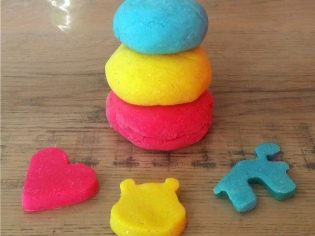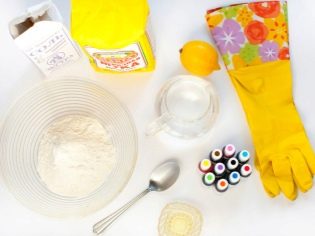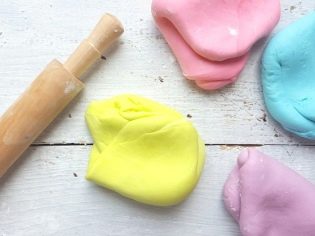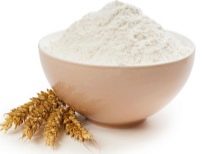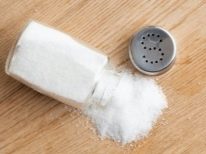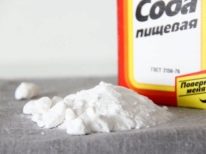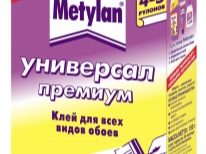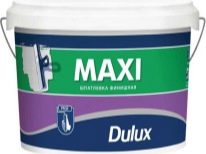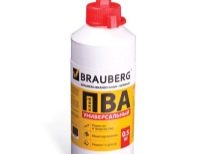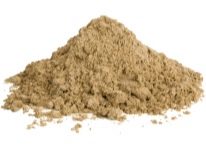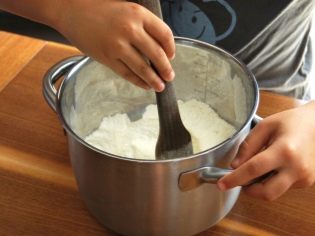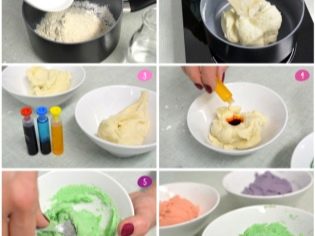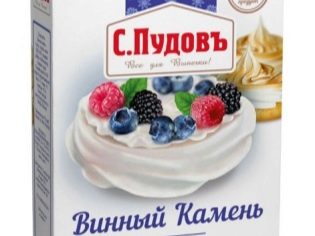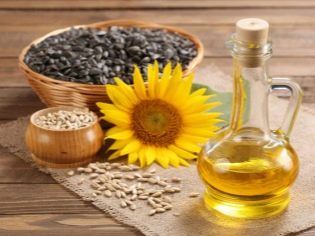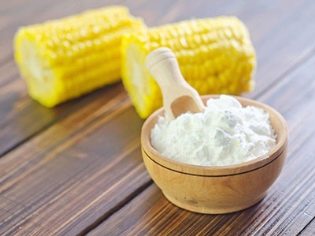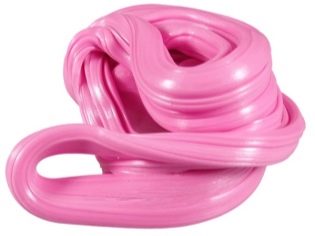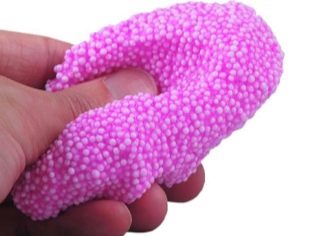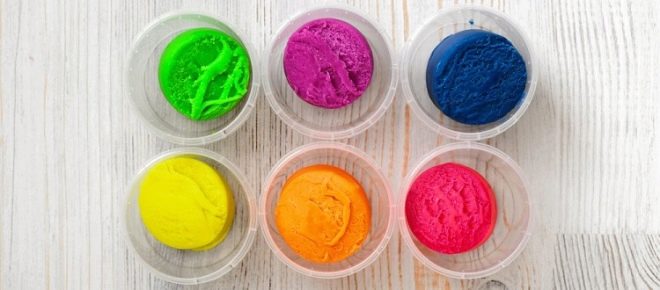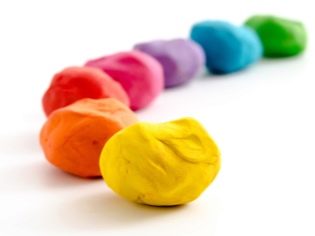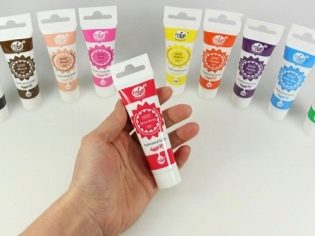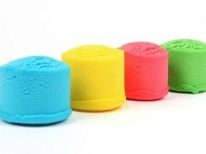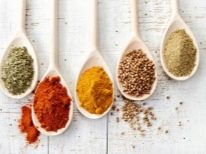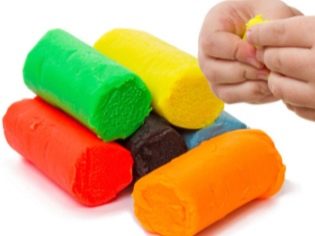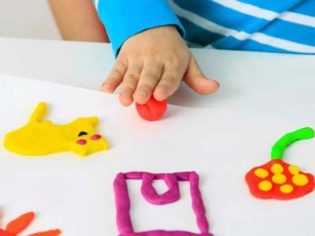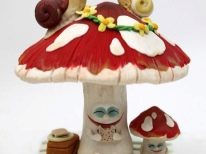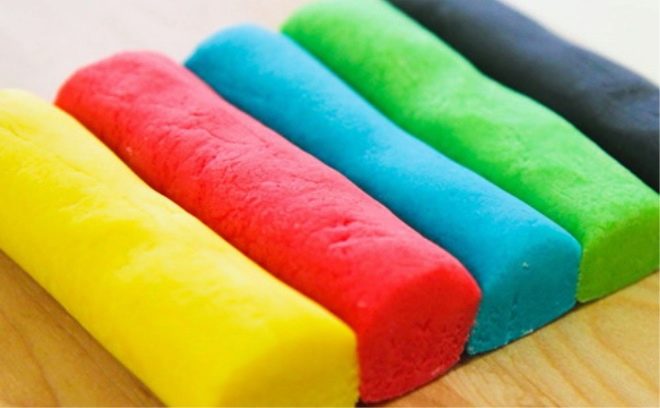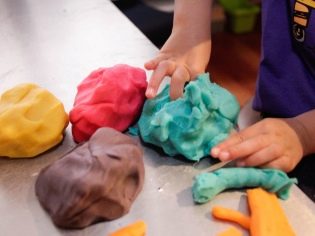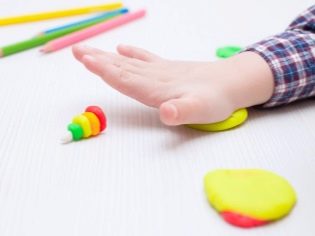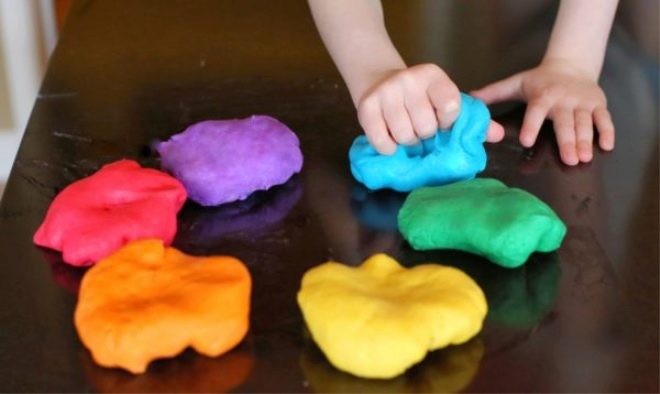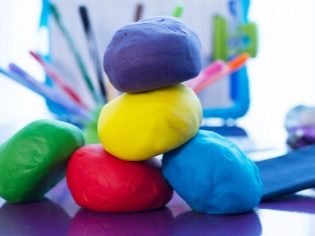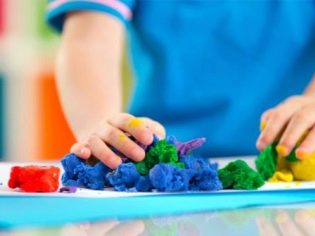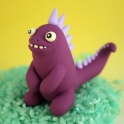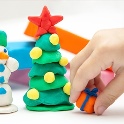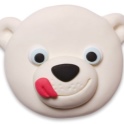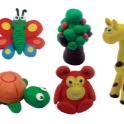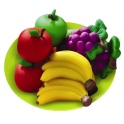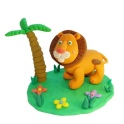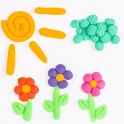How to make clay at home?
Plasticine is a thing absolutely necessary for the development of a whole range of skills and abilities of a child, from fine motor skills of hands to imagination and creative abilities. Years go by, and technologies replace each other, but there is still room for plasticine in any children's room.
Another thing is that even today, buying modern clay in the store, we cannot be 100% sure that this particular type of species is completely safe for the baby and does not threaten him with allergies or other unpleasant consequences.
The only way to gain confidence is to independently check which ingredients are used in the production process, but for this you need to make clay yourself. However, this is not fiction, but a real way out.
Characteristics of a homemade product
If you still doubt whether it is worth making children's clay at home, be sure to pay attention to those the advantages that homemade product gives compared to the purchase:
- Security. You hardly wish bad things for your children, so there is not a single reason for you to add an untested, questionable ingredient to the mix. That is why hand-made clay is the only safe one.
- The ability to create clay to your own taste. The modern market offers a huge variety of varieties and colors of plasticine, but a really good choice is presented only in large cities, and the smaller your locality, the harder it is for kids to get what they have been dreaming about for a long time. If you do not always succeed in buying a mixture for modeling, then at home we make such clay as we want - it can be baby dough, sculptural clay (plastic for modeling), and “chewing gum”, and even magnetic, not to mention about the widest palette of possible colors.
The necessary components for all this variety, as a rule, are very simple and can be found almost everywhere.
- Cost savings. Although plasticine usually assumes that you can sculpt from it repeatedly, in fact, its capabilities are at least limited by the fact that mixing different shades produces a mass of rather unattractive color, which is no longer suitable for real masterpieces. Consequently, you have to buy a child a new clay constantly, and this is a significant cost; if the mixture is also needed not classical, but some kind of more modern one, a child’s fascination with modeling can be very costly for a family.
The issue of economy is particularly acute in regions remote from large cities - the cost of mass for molding there is also greatly increased due to the costly delivery.
The practice of self-production of plasticine shows that even in the conditions of store availability, it can be produced much cheaper thanks to the knowledge of self-made recipes.
Materials
Each of the many types of homemade clay involves the use of components that are not repeated in different ways, but they are almost always environmentally friendly and do not contain harmful synthetics.
Actually, some varieties of clay are so simple in their essence that for their home cooking they don’t even need to specifically go to the store.These include, first of all, the dough for modeling - it is made from ordinary flour, water and salt. The result is not only practical, but also edible, and so that the baby does not use it for other purposes, experts advise adding more salt (which also does not allow water to evaporate, leaving a lot of elastic) or citric acid.
On the other hand, some mothers add more to the mix. Saharaso that the finished figures are not only beautiful, but also tasty. For greater durability, some add more tartar or alum - the finished material is no worse than that of the famous brand. Play Doh!
Alternative recipes suggest the production of such a test using starch or oatmeal, and if you have your own hive with the addition of honey.
At home, it is easy to make polymer clay, freezing quickly enough in the open air and allowing to perpetuate the finished figures. In addition to the ingredients described above, there may be added soda, wallpaper glue or even fine-grained putty.
“Smart” plasticine requires slightly more complex ingredients, but they are also easy to get - for this, an ordinary pharmacy and a clerical store are enough. It is prepared from PVA glue and sodium tetraborate, but you should not be afraid - the original product does not have any initial properties of both materials, but it acquires some new ones - for example, it does not get dirty at all and does not stick to hands.
There are recipes with more unexpected ingredients like laundry detergent or hair conditioner, but these components also exist in any home.
Adding to the mixture a magnetic crumb, which can be ordered by mail, we get magnetic intelligent clay, which does not stick to hands and clothes, but is not indifferent to the influence of a magnet.
Kinetic sand is also often referred to varieties of clay, although it is actually made from sand. There are also no supernatural ingredients - only sand (perfectly clean!), starch and water. The resulting sand clay will be somewhat closer to the sand from the beach, but it is also very fascinating to sculpt from it - especially since it keeps its shape much better than its natural competitor.
Even from balls of foam, you can personally make some kind of plasticine analogy, resembling a grainy version of the store. Foam balls can be crafted from any piece of this material used to pack various fragile things such as technology, and from other relatively complex ingredients you will need borax and simple PVA glue.
Step by step production
Each type of clay described above has its own cooking recipe, and sometimes even several. Someone is experimenting with improvised means due to the absence of the indicated ingredients, and it turns out quite well, and someone slightly changes the described proportions in order to make the mass more dense, or vice versa - liquid. Writing absolutely all possible recipes in one place is impossible, therefore We present only a few simple, easily implemented and popular recipes:
- "Lazy" dough for modeling. Two glasses of salt and one flour each and plain cold water. First, the bulk ingredients are thoroughly mixed, then a little water is poured in to achieve maximum mixing. The mixture is kneaded first in a bowl, and then on a flat surface, floured, until a stable mass is obtained. If the product sticks to your hands, add a little flour, but if it turns out too tight and thick, you can slightly increase the amount of water.
- Improved dough. A glass of salt is mixed with half a glass of flour, and then a glass of water is slowly added. To the resulting mixture, add 2 teaspoons of tartar (to better resist drying), a tablespoon of vegetable oil (for increased softness) and a dye.After that, the resulting jelly is cooked on medium heat until thickening. The formed ball is cooled and again thoroughly stirred.
- Simplified self-hardening mass. A mixture of two glasses of soda, one glass of cornstarch and one and a half glasses of water is cooked until a lump is obtained. To achieve the desired effect, the lump is removed from the heat and thoroughly mixed.
- Standard "chewing gum for hands." PVA glue (50-100 milliliters, at your discretion) in a glass vessel diligently mixed with a dye (also at will - the more, the brighter the result will be) until a homogeneous mass. Then sodium tetraborate is added - we do not indicate a specific quantity, because the total density of the substance depends on its quantity, and the quality of the glue and the amount of dye also affect the proportion.
For this reason, add tetraborate advised gradually - one spoon, paying attention to how the process of thickening. The tetraborate should be evenly stirred, so in the process of mixing, do not forget to constantly stir the substance.
- Kinetic sand do it yourself. Acquired in a pet store (or any other) clean sand in the amount of 4 cups mixed with 2 cups of starch and 1 cup of water, then carefully mix.
- Home ball clay. Dissolve two tablespoons of borax in half a glass of hot water. Separately mix 60 grams of simple PVA glue with a quarter cup of warm (not hot) water, and add dye here. Pour both mixtures into a plastic bag with a clasp, add one and a half cups of small foam balls and shake well.
Adding color
Most often, clay is made in a set of several colors, or at least one particular color. As a rule, this requires the addition of dyes, because as a result of the application of most of the described recipes without dye, you get a simple white clay with minor deviations in borderline shades.
This color is appropriate either in the set, or in the event that you have a mass for sculpting, hardening in the fresh air to a solid state - then it is much easier not to sculpt a complex figurine of multi-colored clay, but to make it from simple white after hardening, paint with ordinary paints.
If it is decided to make plasticine of other colors, you need to pay more attention to working with dyes. Most recipes involve mixing them into the composition at almost any moment, even after the mixture is considered ready - the only question is whether there is no such stage at which more thorough uniform mixing is provided.
Ball clay from crushed foam - perhaps the only form that requires staining strictly during the production process.
Plasticine is colored with the help of food dyes of the desired shade, and if the child is already large enough not to pull the mass in the mouth - and with the help of ordinary gouache. Another thing is that for the youngest children it is better to use natural, self-made dyes from what is on hand. The easiest way is to personally squeeze the juice from fruits or vegetables of the desired color. Yellow tint is obtained by adding seasoning curry or saffron, brown - cocoa or coffee.
What can blind?
Different types of plasticine have a different purpose, for example, from lizun-hendgam (“smart plasticine”), in principle, it is problematic to fashion something difficult - it is rather a simulator for hands; on the other hand, some of its varieties, while freezing, are perfectly springy, which allows you to make a bounce or a whole ball. The dough figures also do not differ in their great detail and the ability to withstand considerable weight (although dense species make it possible to make a properly functioning eraser).
Ball clay, though used to create full-sized small sculptures, is more relevant for horizontal modeling - decorating applications or even objects. Kinetic sand is perfectly molded, but, like its natural beach brother, does not guarantee the strength of the products obtained and is mainly used to create castles and other elements of toy architecture.
Another thing is a kind of homemade clay stuck in the air, because it initially assumes that something really worthwhile will be made from it. For this modeling is already needed a full story. The most common motive and inspiration for children's plasticine creations are animals - for example, puppies or kittens.
Because of the elegance of the form, it is somewhat more difficult to sculpt birds, so they can be the next step in the process of improving the creative skills of the baby.
You can also pay attention to vegetable sources of inspiration - start with fairly simple mushrooms and end with natural looking trees. Not harder in terms of implementation, but a little intricate in the sense of fantasy will look like composite combinations of the above elements, allowing you to create not only individual figures, but also true holistic landscapes and scenes.
Do not rush to sculpt little men - most likely, at the early childhood stage, they will be extremely primitive for a child, therefore this option is only for those children who like modeling and who have achieved certain success in it.
Important nuances
In the independent production of plasticine in the home, you should not blindly rely on the proportions indicated in the recipes and strictly observe them. The fact is that even with the same set of ingredients proportions in different sources can be specified different, because any, even the most standard material still differs from case to case.
The same flour can be more or less sticky, like starch, PVA glue is produced by different plants and also slightly different, and the amount of dye in general is not exactly indicated in any recipe, although this factor affects the overall thickness of the mixture.
This means that with allegedly identical ingredients and proportions, the density of the resulting clay can vary significantly, not to mention the fact that this concept is somewhat relative: some mothers want thick and elastic clay for the viscosity of the resulting figures, and others - more liquid to simplify sculpting.
It is not surprising that many try to influence the final result by arbitrarily changing the proportions. To make the clay harder and harder, need to increase the content of binding elements (for example, flour or starch), or vice versa - reduce the amount of water.
In those grades of plasticine that do not provide for any water at all, they also increase the proportion of the binder ingredient for enhanced thickening - in particular, more sodium tetraborate is added to the “hands gum” (provided that a prescription is chosen in which it exists).
Accordingly, to liquefy too thick mass, you usually just need to add a little water, and in the case of making clay using flour you can also increase the content of the softening plasticizer, which is often vegetable oil.
How to restore the drying mass?
The problem of gradual solidification of homemade clay, which over time becomes too strong and inelastic for modeling, is particularly relevant for those varieties that are prepared by analogy with the test.
It is best to protect it from such phenomena at the preparation stage. To do this, put into the mixture an increased amount of salt that retains moisture, cream of tartar or alum, and also adds vegetable oil for softness.Nevertheless, the substance still solidifies over time, loses elasticity, and its products begin to crumble - even the best samples usually withstand no more than two months, and nothing can be done about it.
One can revive the plasticine and make it elastic again only if it hardened only slightly outside, and remained soft inside. To do this, gently knead it with a small addition of water or hand cream, but again this is only a temporary measure.
However, such a recipe is still popular, because instead of a spoiled mass, you can always make a new one.
The “chewing gum for hands” is restored in a similar pattern, but with one important clarification: it is not diluted with water, for the reason that it was not originally included. You can use hand cream or any other moisturizer, but in general, this type of mixture is much more durable than its distant relative from flour.
As for all other varieties, this problem is irrelevant for them. Clay hardening in the fresh air is specially created in order to quickly harden and maintain the resulting artistic form, and if it is frozen, it will not be possible to soften it. Kinetic sand does not harden - it can only lose a little in stickiness and become more free-flowing; approximately the same can be said about the ball version.
Ideas beautiful crafts
Since the majority of children, studying with clay, only learn to sculpt and do not have certain skills, it is important to interest the child, clearly demonstrating that even he is able to create something intelligible. In fact, you can even create simple animal figures from typical children's balls and sausages, if you think out the future design correctly. Baby thinking is not under force, therefore, adults are obliged to help.
The next step in learning is giving the figurine greater naturalness. In particular, it is now worth abandoning unconditionally rounded shapes and trying to give individual details a more complex configuration. You can use both fingers and the stack for this. A separate and rather difficult moment is to teach the child to add small details of a different color to the sculpture.
The photo is far from a masterpiece, but technologically such a figure is quite complex, and most adults will not even be able to blind it.
Actually, the product does not have to be three-dimensional - colored clay can be used for application both along the contour and with full “shading”. In aesthetic terms, the application of ball clay will look better, but in general, ordinary classic dough is suitable for this.
Visually on how to make clay with your own hands, see in the next master class.
